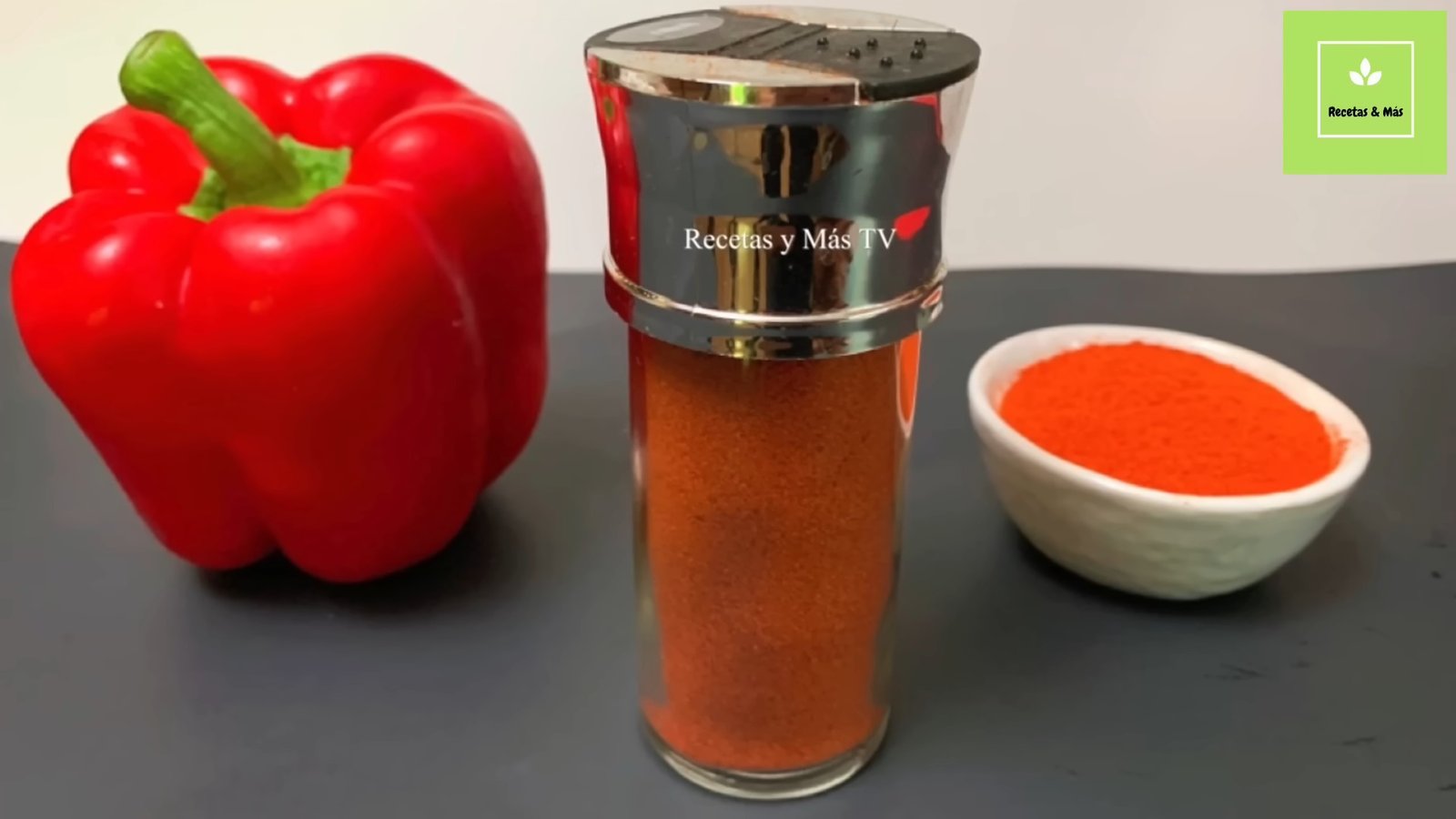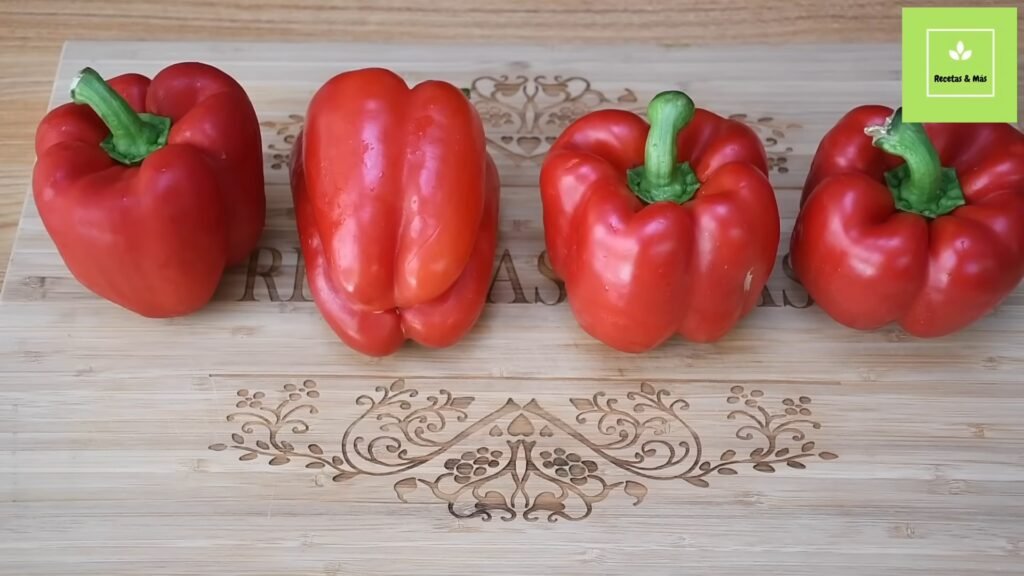Nutrition Facts
0 servings

Looking to cut costs and avoid preservatives in your kitchen? Learn how to make homemade paprika (red pepper powder) using simple ingredients and tools you already have. This method is budget-friendly, easy to follow, and perfect for anyone looking to stock their spice cabinet with natural, homemade condiments.
Why Make Paprika at Home?
Store-bought paprika often contains preservatives, anti-caking agents, and artificial colors. Making paprika at home ensures you're using fresh, clean ingredients—and it's much more affordable in the long run.
What You’ll Need:
4 red bell peppers (see pepper selection tips below)
Optional dried chilies (like Chile de Árbol or Japanese chili) for a spicy version

Oven or sunlight for drying
Grill rack or drying rack
Food processor or blender
Step 1: Choose the Right Peppers
Did you know peppers can be male or female?
Male peppers have 3 lobes and are less sweet—great for savory spice blends like paprika.
Female peppers have 4 lobes and tend to be sweeter—better for eating raw or in salads.
For a more savory, less sweet paprika, use three male peppers and one female.

Step 2: Prep the Peppers
Wash thoroughly. Always wash your peppers to remove dirt and residue.
Remove seeds and stems. Seeds can make your paprika bitter, so be sure to discard them completely.
Slice thinly. Cut the peppers into thin strips to speed up drying and ensure even dehydration.
Step 3: Dry the Peppers
There are two methods:
Oven Drying:
Place the sliced peppers on a clean oven rack.
Preheat oven to 400°F (200°C).
Leave the oven door slightly open to allow moisture to escape.
Dry for about 25–30 minutes, checking occasionally.
Sun Drying (No Oven Method):
Lay the slices on a clean grill rack or mesh screen.
Leave in direct sunlight for several hours or days, depending on humidity.
Cover with mesh if needed to keep bugs away.

Important: Peppers must be completely dry before grinding. Moist peppers won’t blend into a powder and could spoil over time.
Step 4: Add Spice (Optional)
Want your paprika to have a kick?
Add a few dried chilies (like Chile de Árbol) to the mix. Remove their seeds and blend them along with the dried pepper slices. You can skip this step for a milder version.
Step 5: Grind Into Powder
Once your peppers are fully dry:
Use a food processor, spice grinder, or blender to grind the slices into a fine powder.
Add your dried chilies at this stage if using.
Step 6: Store Properly
Pour your homemade paprika into an airtight container or a glass spice jar.
Label it with the date and name to keep your spice rack organized.
Store in a cool, dark place for maximum shelf life.
Tips for Success:
Don't rush the drying process. The key to great paprika is thorough drying.
Add bay leaves to your storage jar to keep the powder fresh longer.
Use your homemade paprika in soups, stews, rubs, marinades, and spice blends.
Why This Recipe Works
This homemade paprika is:
100% natural – no additives or preservatives
Budget-friendly – uses ingredients you already have
Customizable – adjust the heat and sweetness to your liking

Sustainable – no need for store-bought plastic containers

Final Thoughts

Making paprika at home is easier than you think—and once you try it, you’ll never go back to store-bought. With just a few peppers, a little time, and a blender, you’ll have your own delicious, homemade spice that’s perfect for any recipe.

Looking to cut costs and avoid preservatives in your kitchen? Learn how to make homemade paprika (red pepper powder) using simple ingredients and tools you already have. This method is budget-friendly, easy to follow, and perfect for anyone looking to stock their spice cabinet with natural, homemade condiments.
Why Make Paprika at Home?
Store-bought paprika often contains preservatives, anti-caking agents, and artificial colors. Making paprika at home ensures you're using fresh, clean ingredients—and it's much more affordable in the long run.
What You’ll Need:
4 red bell peppers (see pepper selection tips below)
Optional dried chilies (like Chile de Árbol or Japanese chili) for a spicy version

Oven or sunlight for drying
Grill rack or drying rack
Food processor or blender
Step 1: Choose the Right Peppers
Did you know peppers can be male or female?
Male peppers have 3 lobes and are less sweet—great for savory spice blends like paprika.
Female peppers have 4 lobes and tend to be sweeter—better for eating raw or in salads.
For a more savory, less sweet paprika, use three male peppers and one female.

Step 2: Prep the Peppers
Wash thoroughly. Always wash your peppers to remove dirt and residue.
Remove seeds and stems. Seeds can make your paprika bitter, so be sure to discard them completely.
Slice thinly. Cut the peppers into thin strips to speed up drying and ensure even dehydration.
Step 3: Dry the Peppers
There are two methods:
Oven Drying:
Place the sliced peppers on a clean oven rack.
Preheat oven to 400°F (200°C).
Leave the oven door slightly open to allow moisture to escape.
Dry for about 25–30 minutes, checking occasionally.
Sun Drying (No Oven Method):
Lay the slices on a clean grill rack or mesh screen.
Leave in direct sunlight for several hours or days, depending on humidity.
Cover with mesh if needed to keep bugs away.

Important: Peppers must be completely dry before grinding. Moist peppers won’t blend into a powder and could spoil over time.
Step 4: Add Spice (Optional)
Want your paprika to have a kick?
Add a few dried chilies (like Chile de Árbol) to the mix. Remove their seeds and blend them along with the dried pepper slices. You can skip this step for a milder version.
Step 5: Grind Into Powder
Once your peppers are fully dry:
Use a food processor, spice grinder, or blender to grind the slices into a fine powder.
Add your dried chilies at this stage if using.
Step 6: Store Properly
Pour your homemade paprika into an airtight container or a glass spice jar.
Label it with the date and name to keep your spice rack organized.
Store in a cool, dark place for maximum shelf life.
Tips for Success:
Don't rush the drying process. The key to great paprika is thorough drying.
Add bay leaves to your storage jar to keep the powder fresh longer.
Use your homemade paprika in soups, stews, rubs, marinades, and spice blends.
Why This Recipe Works
This homemade paprika is:
100% natural – no additives or preservatives
Budget-friendly – uses ingredients you already have
Customizable – adjust the heat and sweetness to your liking

Sustainable – no need for store-bought plastic containers

Final Thoughts

Making paprika at home is easier than you think—and once you try it, you’ll never go back to store-bought. With just a few peppers, a little time, and a blender, you’ll have your own delicious, homemade spice that’s perfect for any recipe.
